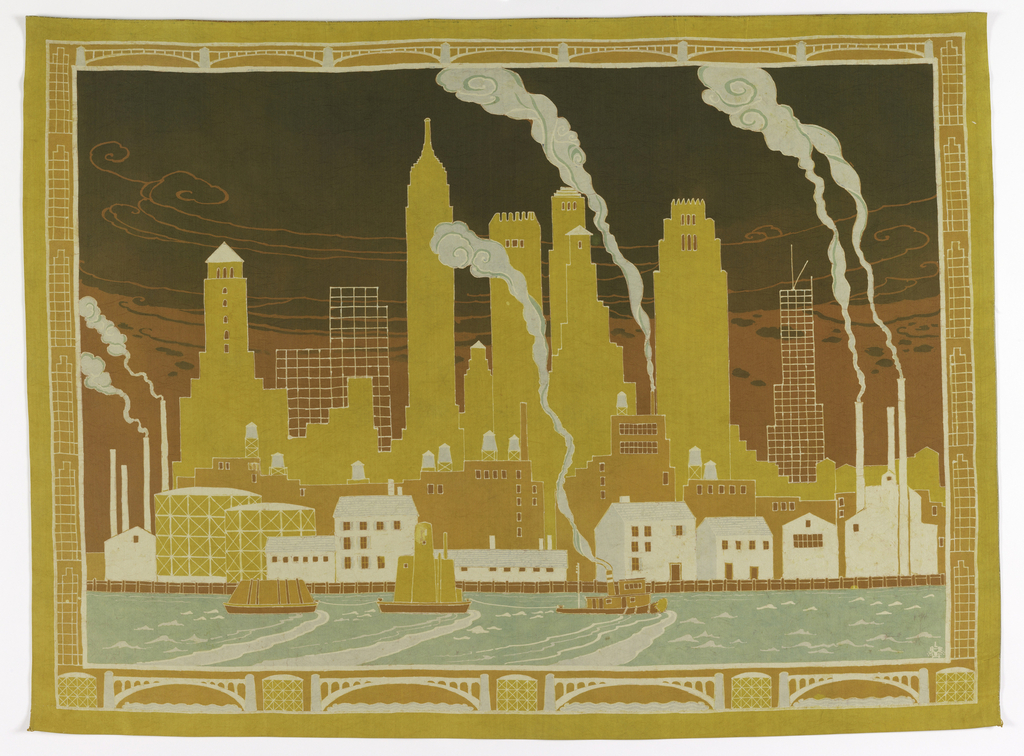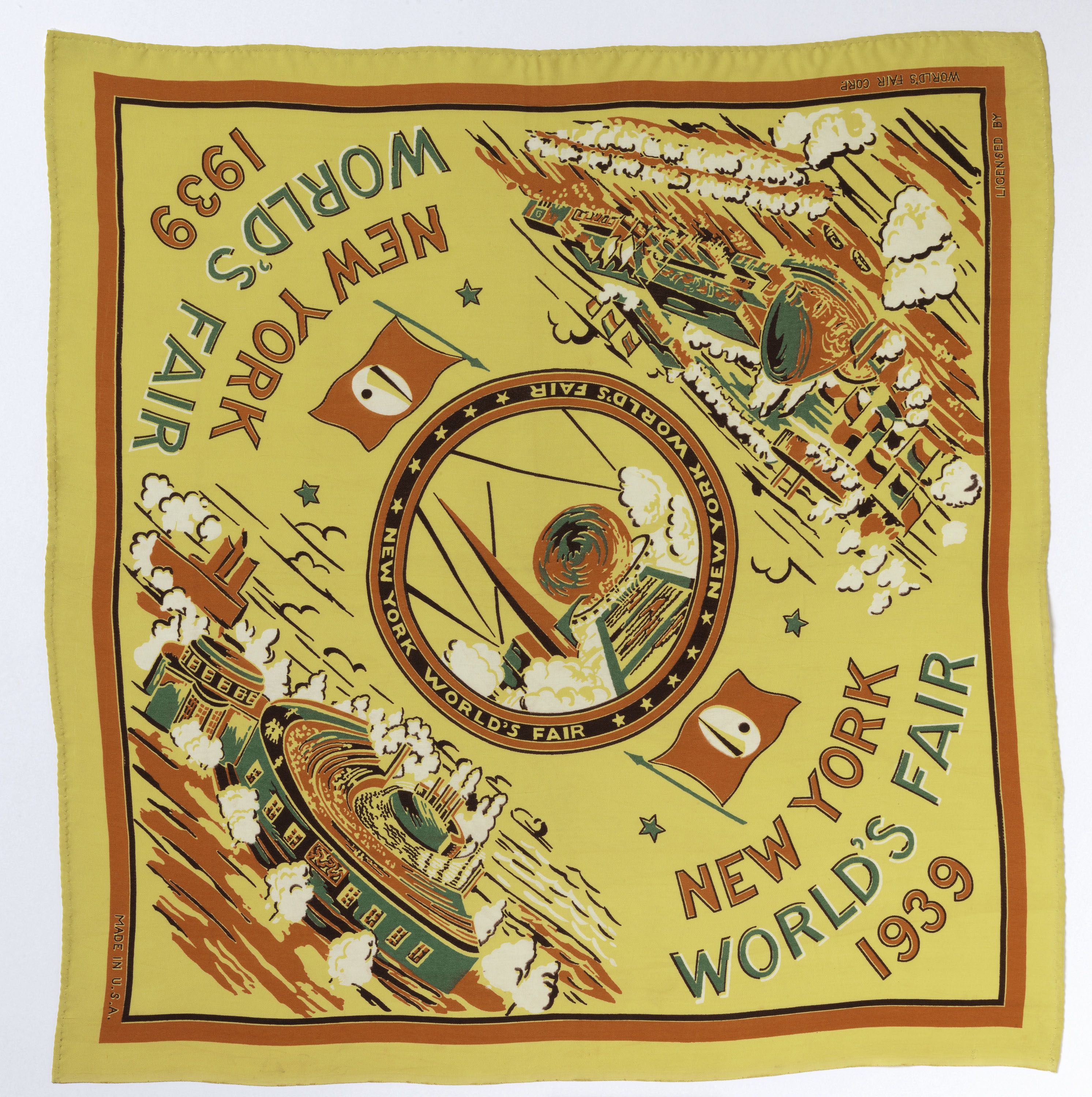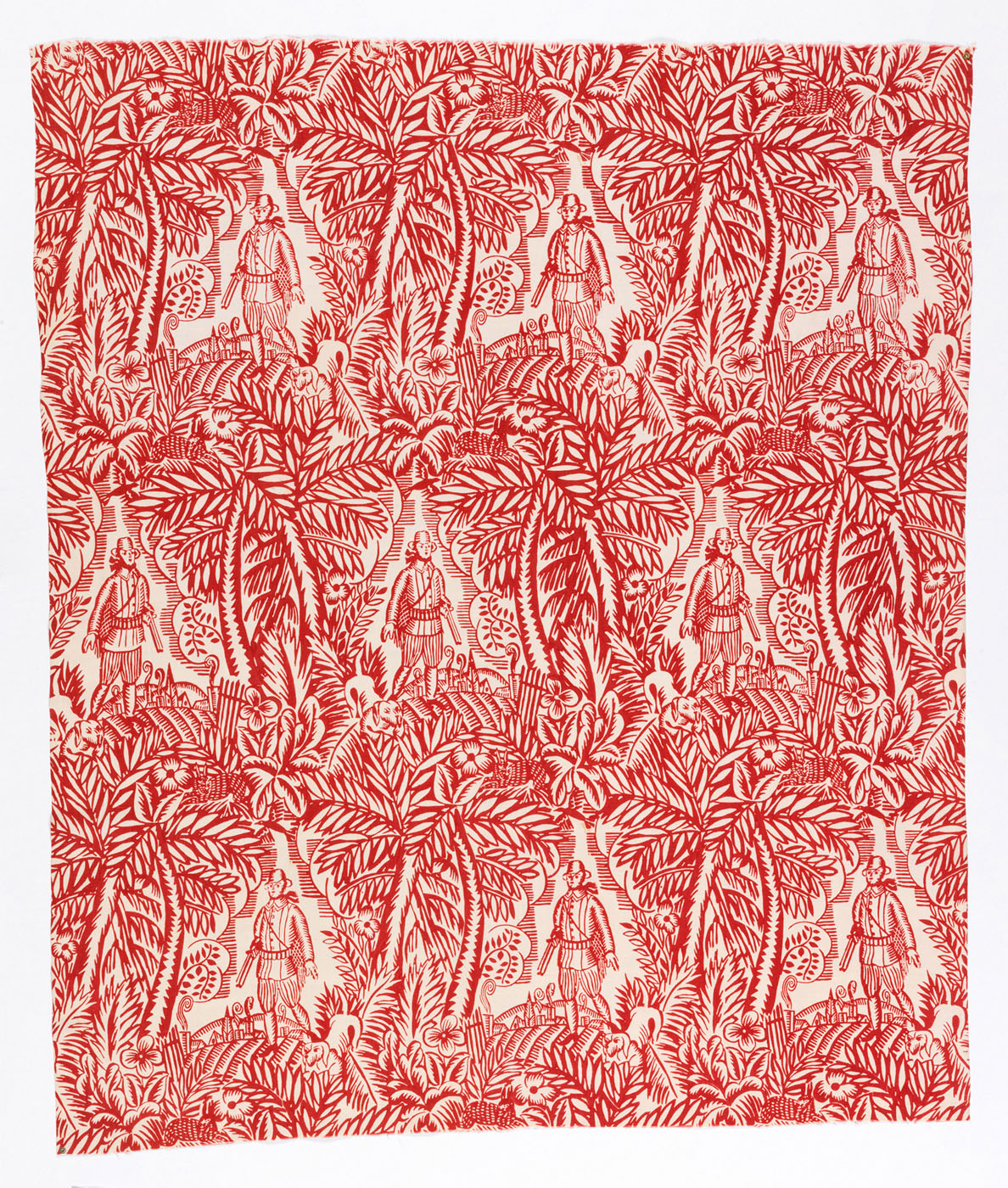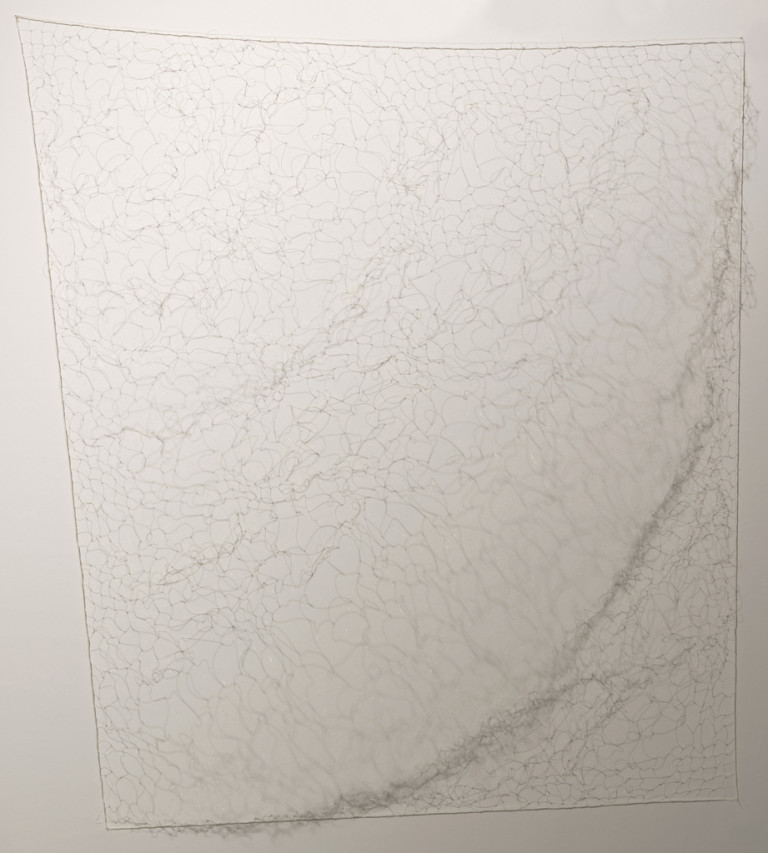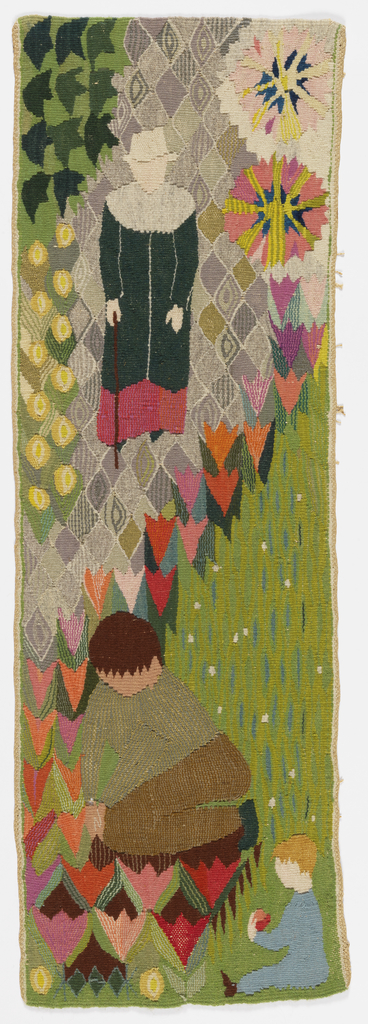Between 1925 and 1927, the Stehli Silks Corporation produced the Americana Prints, a series of nearly 100 artist-designed dress silks for the modern woman. American artists, designers, celebrities and cartoonists were selected to create the prints, among them photographer Edward Steichen and cartoonist John Held Jr., who produced the piece featured here. Taken together, the...
Batik, an ancient craft often associated with Indonesia, became popular in United States in the 1910s and 20s, with artists such as Arthur Crisp, Pieter Mijer, and Lydia Bush-Brown attracting national attention. These artists worked in the traditional manner, painting paraffin and beeswax on their cloth to create a resist, but expanded the traditional design...
The 1939 World’s Fair at Flushing Meadows Park in Queens was themed the ‘World of Tomorrow.’ Visitors came away with visions of radio-controlled highways, mechanical milking machines, and the 7-foot-tall Westinghouse robot. Many also left with Fair memorabilia, from the pins given away at the Futurama exhibition that read ‘I have seen the future,’ to...
This headscarf is one of a series known as the Ascher Squares, produced as part of an historic collaboration between Ascher Studios, an haute couture textile company in London, and more than fifty modern artists, including Henry Moore, Jean Cocteau, Alexander Calder, and painter André Derain, who designed the headscarf featured here. Ascher Studios gave...
Although best known as a painter, Raoul Dufy was also a skilled printer of woodcuts. In 1910, with the encouragement of fashion designer Paul Poiret, he began translating his woodcuts into fabric designs. His reputation quickly grew, and in 1912 he signed a contract with Lyons-based silk weaving company Bianchini Férier to produce printing plates...
“My ordinary materials are fiber and air,” explained textile artist and scholar Joanne Segal Brandford in a university lecture in 1993, and it’s true. Whether made of coarse bands of rattan or fine strands of nylon, her nets, fabrics, and baskets seem to rest lightly in space. In its most basic form, a net is...
In a 1971 article, Lenore Tawney’s studio was described as a “gymnasium sized” space filled with “clumps of projects in progress – feathers, egg shells, and delicate animal bones ready for inclusion” in the artist’s weavings and assemblages.[1] One can easily imagine Mourning Dove, pictured above, coalescing from these materials. Tawney is a revered figure...
Tapestry weaver Ann-Mari Kornerup (1918-2006) frequently depicted scenes of everyday life. Many include children. Kornerup was born in Stockholm, Sweden and studied at the Swedish School of Textiles, Borås. She moved to Denmark after her marriage to Danish architect Jørgen K. Ebbe and established a weaving workshop in Charlottenlund, outside of Copenhagen, in 1951. A...
California textile artist Lydia van Gelder (1911-2012) created this piece for the 1939 Golden Gate International Exposition (GGIE) in San Francisco. Having taken up weaving only several years before, her inclusion in the GGIE marks the beginning of a distinguished career as both an exhibiting artist and textile arts educator. Best known now for her...

